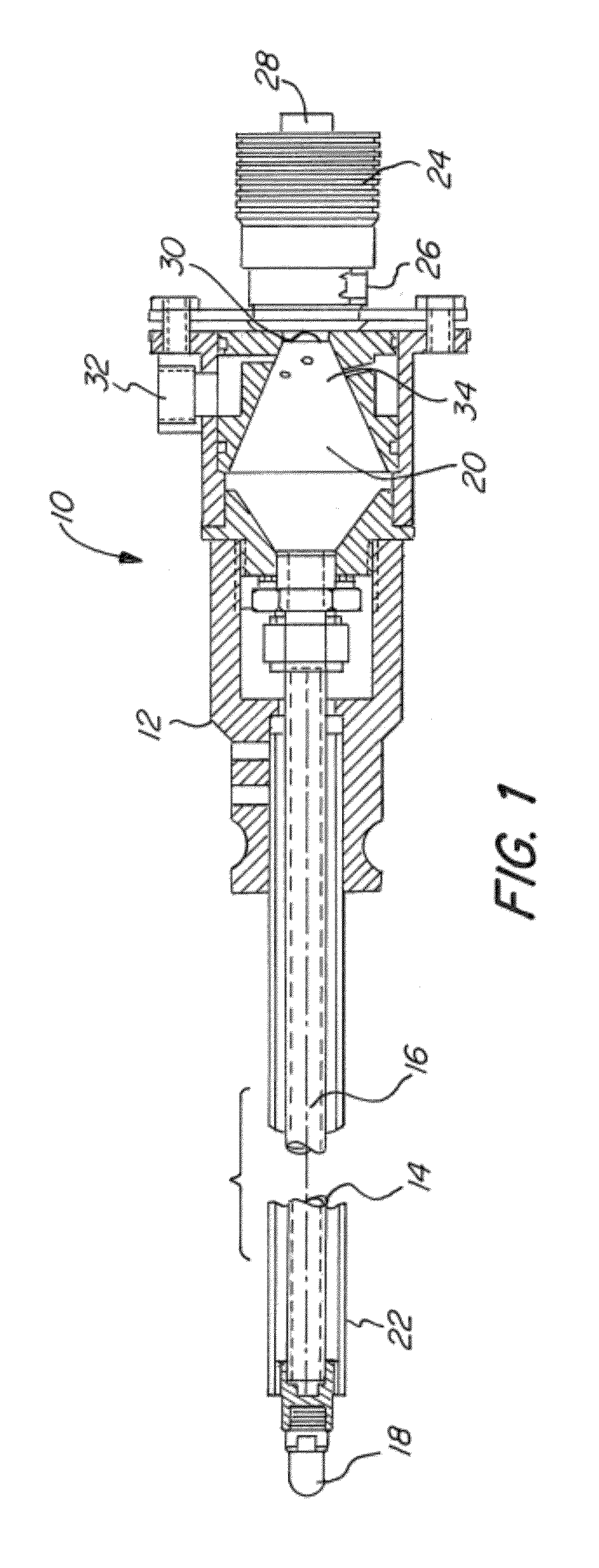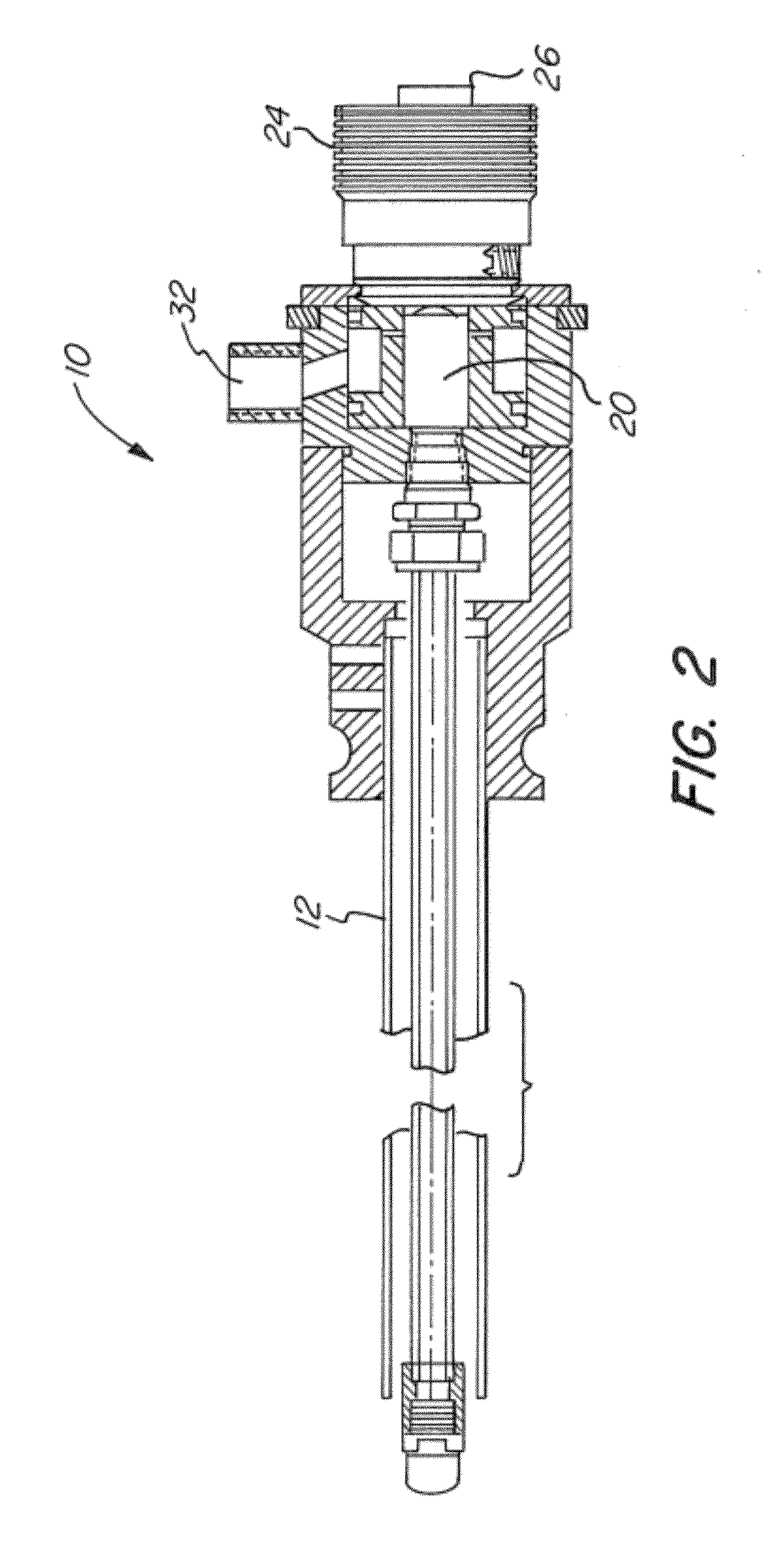Injector And Method For Reducing Nox Emissions From Boilers, IC Engines and Combustion Processes
a technology of injector and combustion process, which is applied in the direction of machines/engines, chemical/physical processes, process and machine control, etc., can solve the problems of increased fuel economy offset by undesired pollution emissions, gaseous ammonia presents storage and handling concerns, and ammonia presence, so as to reduce nox emissions and maximize the efficiency of the scr process
- Summary
- Abstract
- Description
- Claims
- Application Information
AI Technical Summary
Benefits of technology
Problems solved by technology
Method used
Image
Examples
Embodiment Construction
[0047]The ensuing detailed description provides exemplary embodiments only, and is not intended to limit the scope, applicability, or configuration of the invention. Rather, the ensuing detailed description of the exemplary embodiments will provide those skilled in the art with an enabling description for implementing an exemplary embodiment of the invention. It should be understood that various changes may be made in the function and arrangement of elements without departing from the spirit and scope of the invention as set forth in the appended claims.
[0048]The present invention is directed to the reduction of nitrogen oxide emissions produced by lean burn engines including boilers, combustors, compression engines and gas turbines firing hydrocarbon based fuels or biomass fuels alone, or in combination. In particular the present invention provides a method and apparatus for injecting urea solutions into the heat extraction zone of a small combustion source, such as a fire tube boi...
PUM
| Property | Measurement | Unit |
|---|---|---|
| inlet pressure | aaaaa | aaaaa |
| inlet pressure | aaaaa | aaaaa |
| air pressure | aaaaa | aaaaa |
Abstract
Description
Claims
Application Information
 Login to View More
Login to View More - R&D
- Intellectual Property
- Life Sciences
- Materials
- Tech Scout
- Unparalleled Data Quality
- Higher Quality Content
- 60% Fewer Hallucinations
Browse by: Latest US Patents, China's latest patents, Technical Efficacy Thesaurus, Application Domain, Technology Topic, Popular Technical Reports.
© 2025 PatSnap. All rights reserved.Legal|Privacy policy|Modern Slavery Act Transparency Statement|Sitemap|About US| Contact US: help@patsnap.com



